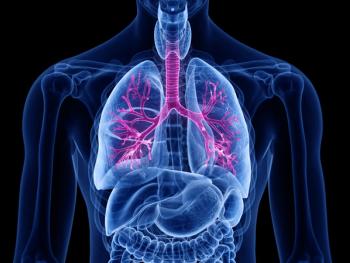
Dosing calculator for Xigris is available on the Web
In August 2005, Woodland Heights Medical Center (Lufkin, Texas) pharmacy technician Fred Poage, CPhT, was taking a computer programming course while pursuing a mathematics degree at nearby Stephen F. Austin State University. Staff pharmacist Eddie Purifoy, R.Ph., challenged Poage to put the course to good use. "Why don't you do something really useful-tackle this Xigris problem?"
In August 2005, Woodland Heights Medical Center (Lufkin, Texas) pharmacy technician Fred Poage, CPhT, was taking a computer programming course while pursuing a mathematics degree at nearby Stephen F. Austin State University. Staff pharmacist Eddie Purifoy, R.Ph., challenged Poage to put the course to good use. "Why don't you do something really useful-tackle this Xigris problem?"
Lilly's table can waste between $400 and $1,000 per patient, said Brown. But doing the manual calculations to cut that waste can take a pharmacist 15 to 45 minutes, he explained.
Frustrated by Lilly's lack of interest, Poage posted his calculator on a free Web page so the medical community at large could take advantage of it. In only weeks, physicians and pharmacists from several states, India, France, Germany, and the United Kingdom had downloaded the calculator. A Portuguese physician suggested adding fields for patient name, attending pharmacist, and ordering doctor. The calculator has since been added to
Why is Poage offering the tool free of charge? Poage said he had only been trying to make his pharmacy department's work easier at the pharmacy. "When I realized what a jewel it is, I thought that if I could get other hospitals to start using it, it would look good on my applications to optometry and pharmacy schools in September." Lilly's reaction was another incentive. "I wanted to show them this is really going to save hospitals and patients money. And even if they weren't interested, it's going to get used anyway."
Pharmacists whom Drug Topics talked to suggested that the calculator would be most useful for smaller hospitals but still helpful at larger facilities. Jaye Weston, M.S., R.Ph., clinical coordinator in infectious diseases at St. Luke's Episcopal Hospital, Houston, who had used it while he was with East Texas Medical Center in Tyler, explained, "Larger institutions often have protocols in place to guide pharmacists in dosing and dose rounding. But a protocol does allow the pharmacist to make certain decisions, whereas Fred's calculator always gives a consistent output of how many vials to use. With consistency you could track your savings better."
At Memorial Medical Center of East Texas in Lufkin, clinical pharmacist Robin Flournoy, Pharm.D., said her hospital uses the 5-mg vials to make the last bag. "Therefore, our wastage is minimal. The dosing calculator follows the same method and is a great way to verify your calculations." Cautioning that there is always the risk of error when doing manual calculations, she added, "This program reduces that risk. It is user friendly and a great tool for the busy pharmacist."
Newsletter
Pharmacy practice is always changing. Stay ahead of the curve with the Drug Topics newsletter and get the latest drug information, industry trends, and patient care tips.











































































































































































































